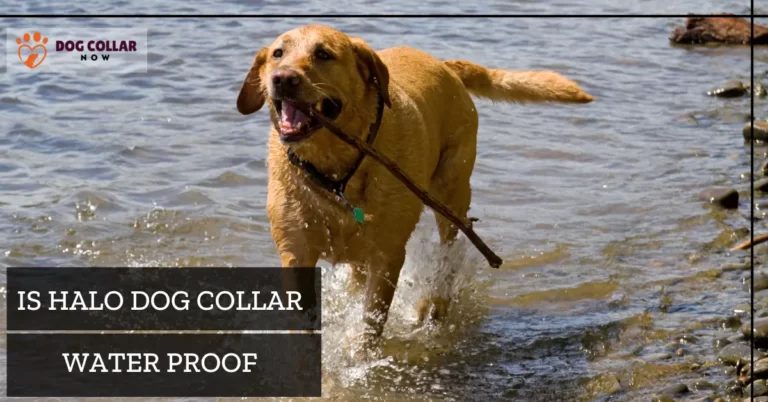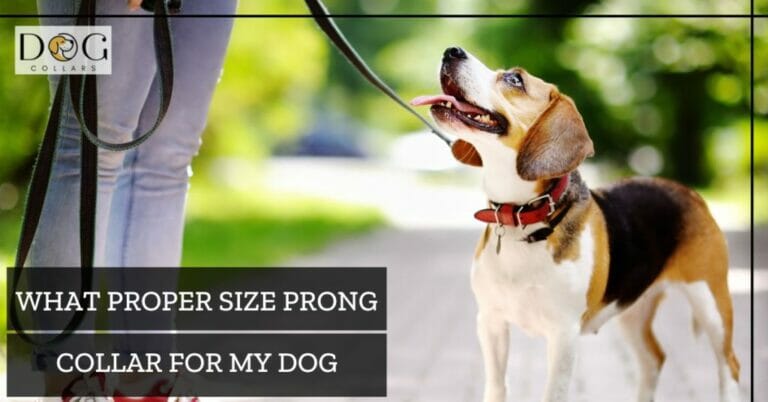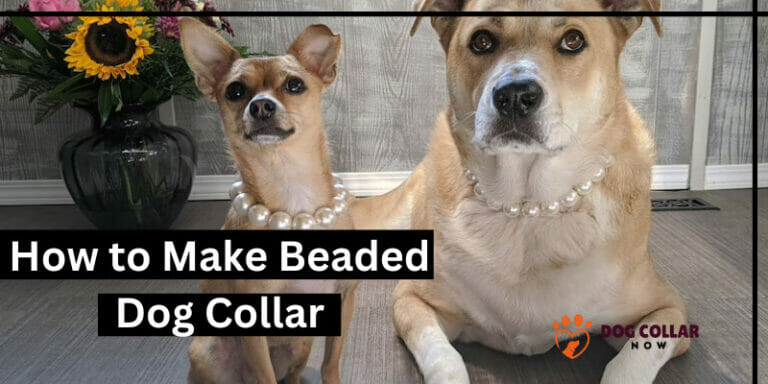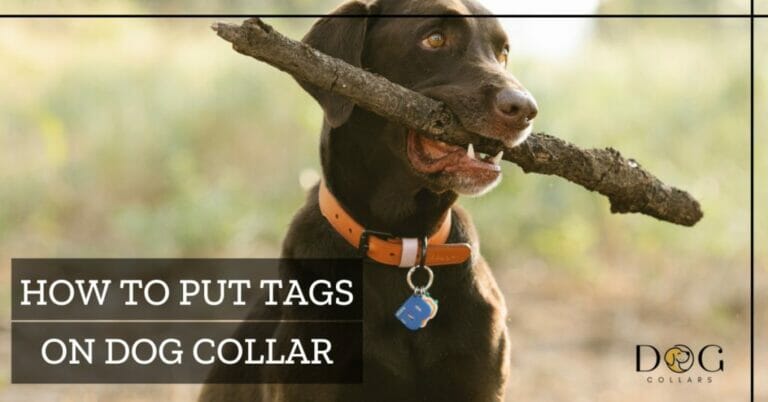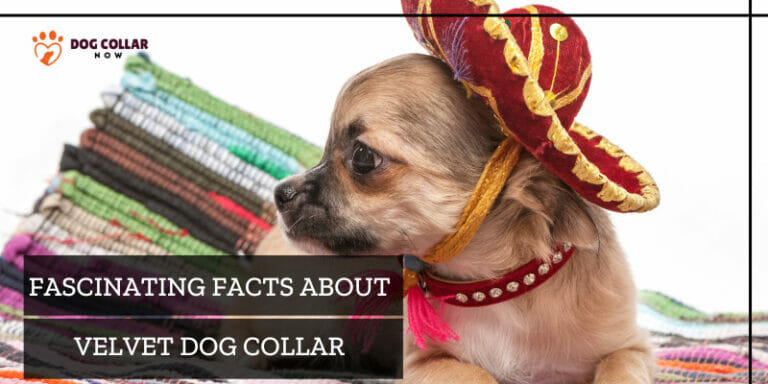What Is A Tactical Dog Collar – Enhanced Control
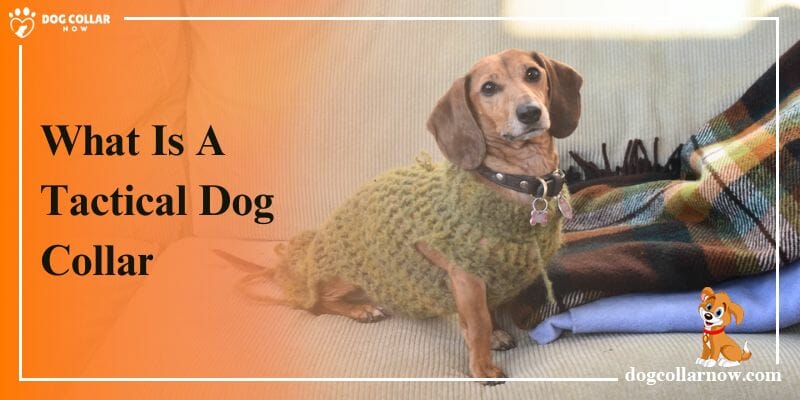
A tactical dog collar is a specialized accessory designed to provide enhanced functionality and durability for working dogs in various tactical and professional settings.
This sturdy collar serves as more than just a fashionable accessory, offering practical features and construction that can withstand demanding environments.
A combat dog band is a specialized accessory providing added functionality and protection for working dogs in various environments. It features durable materials, padding, a handle, and multiple attachment points for leashes and equipment.
In this piece of information, we’ll dive into everything you need to know about what is a tactical dog collar – from their different types and benefits, to how to properly choose and put one on.
Whether it’s for training or just a casual walk in the park, get ready to discover why these heavy duty collars are increasing in popularity among military personnel and pet owners alike.
What is a tactical dog collar?
A tactical dog collar is a specially designed collar that provides both comfort and control for dogs. It’s made from durable materials such as heavy-duty nylon, metal buckles, steel D-rings, and strong webbing to withstand the rough handling of military training or outdoor activities.
The purpose of this collar is to provide superior control over your pet while giving them the freedom they need to move around without feeling restrained.
Unlike regular collars, tactical dog ruff have an extra handle on top that allows you to quickly grab and control your pup if needed. This feature comes in handy during training sessions or when walking through crowded areas where you need extra security and safety for your furry friend.
Another unique aspect of these collars is their ability to accommodate additional gear such as ID tags or leashes with ease. Some models even come with double-layered webbing which provides added strength without sacrificing comfort.
This offers pet owners increased durability, functionality, and flexibility in managing their furry friends during different outdoor activities.
The different types of tactical dog collars
These collars come in different types, each designed to offer specific benefits for your canine companion. The first kind is the handle collar, which features a sturdy handle that enables you to maintain control over your dog during training or outdoor activities.
Another is the buckle collar, which has an adjustable metal or plastic buckle that secures the collar around your dog’s neck. This kind of collar is ideal for everyday walks and runs with your furry friend.
For military and police dogs, heavy-duty tactical collars made from durable materials such as steel webbing provide excellent strength and control during high-intensity operations. These collars often feature extra D-rings for attaching leashes and other gear.
If you’re looking for comfort and ease of use, then a release buckle collar might be perfect for you. It offers easy on-and-off functionality through its quick-release system.
There are premium tactical collars that boast double-layered fabric material ensuring maximum durability while providing comfort to your pooch. They also include ID tags where owners can input important information about their pets in case they get lost or need medical attention.
No matter what kind of tactical collar you choose, make sure it fits properly by measuring your dog’s neck before purchasing one to avoid discomfort or breakage during trek or any activity that requires wearing it.
The benefits of using a tactical dog choker
This is not just a regular collar, it has several features that make it stand out from the rest.
Durable:
One of the biggest benefits of using this dog band is its durability. These collars are made with heavy-duty materials like steel and double-layered webbing, making them strong enough to withstand even the toughest conditions.
Extra Control:
Another benefit of using a this collar is the extra control it gives you over your dog during training or trek. The handle on these collars allows you to easily guide and control your pup when needed.
Extra D- ring:
Military dog collars also often come with an extra D-ring for attaching a leash or other gear, giving you more options for customization. This feature comes in handy if you’re going on long hikes or camping trips where you need to bring along additional equipment.
In addition to being durable and providing better control, many collars also have quick-release buckles for added safety in case your pup gets caught on something while out and about. And let’s not forget about how comfortable they can be! Many models include padding or breathable mesh fabric to keep your furry friend feeling good all day long.
There are plenty of reasons why investing in a high-quality dog strap is worth it – from increased durability and control to added customization options and comfort for your beloved pet!
How to choose the right size tactical dog collar
Choosing the right size of dog collar is important for your dog’s safety and comfort. You don’t want a collar that is too tight or too loose, as it can cause discomfort or even lead to injury.
To choose the right size, you will need to measure your dog’s neck using a tape measure. Make sure to measure at the base of the neck where it meets the shoulders.
Once you have measured your dog’s neck, add an inch or two to ensure that there is enough room for adjustment. It’s better to have a slightly loose collar than one that is too tight.
Keep in mind that different brands may have different sizing charts, so be sure to check each manufacturer’s guidelines before making a purchase.
It’s also important to consider the width of the collar. A wider collar may provide more support when treking or training your dog, but may not be suitable for smaller breeds with delicate necks.
By taking these factors into consideration and measuring properly, you’ll be able to find a perfect dog collar that fits comfortably and securely on your furry friend.
How to put on a tactical dog collar
Putting on this collar requires some knowledge and practice to ensure your dog’s safety and comfort. Before you start, make sure the collar is the right size for your dog’s neck. You can measure it with tape or simply try different sizes until you find the perfect fit.
Once you have the correct size, open the buckle and slide it over your dog’s head. Make sure that both D-rings are facing up towards their ears and not twisted around their neck. Then, fasten the buckle tightly enough so that it doesn’t slip off but loose enough so that there’s still room for one or two fingers between the collar and your dog’s skin.
It’s important to check if everything is in place before heading out for a trek or training session. The handle should be accessible at all times in case of an emergency situation where you need more control over your furry friend.
If you plan on using a leash, attach it to both D-rings instead of just one to distribute weight evenly across the chest area. This will prevent any strain on their neck when pulling during walks or training exercises.
By following these simple steps, your canine companion will feel secure while wearing their new tactical gear – ready to perform at their best!
The main difference between tactical dog collar and regular collar
When it comes to choosing a collar for your furry friend, there are plenty of options available in the market. However, not all collars are created equal and different situations require different types of collars. One such kind is the war collar.
The main difference between a tactical collar and a regular collar lies in its design and functionality. Tactical collars are designed with heavy-duty fabric like metal or durable webbing, making them stronger and more durable than regular collars.
Defence collars also come equipped with features like an extra D-ring for leash attachment or a handle on top for better control during training or military operations.
These additional features provide better handling capabilities to owners who need greater control over their dogs while they perform tasks such as search-and-rescue missions or walking in crowded areas.
In contrast, regular collars tend to be made of softer stuff like nylon or plastic that may break easily if pulled too hard. They typically lack the added features that make tactical collars so valuable for those who demand more from their pet gear.
While both types serve their respective purposes well, the unique design and added functionality make defence dog collars stand out among other options on the market today.
Conclusion
A tactical dog collar is an excellent investment for pet owners who want safety and control during various activities. They come in different types, sizes, and designs, providing comfort, durability, and maximum control. Consider your pet’s size, material, buckle, and extra features like D-rings.
These collars are stronger than regular ones due to heavy-duty metal construction and sturdy webbing. Choose one for better performance during walks, hikes, or training. Ensure your furry friend is always under control with a high-quality tactical dog collar.
FAQs:
What is a tactical collar used for?
tactical collar is used for enhanced control, safety, and durability during various activities such as training, outdoor adventures, and professional tasks involving dogs.
What are the benefits of tactical dog collars?
The benefits of tactical dog collars include improved control, durability, strength, and versatility for various activities such as training, outdoor adventures, and professional tasks.
What are military dog collars?
Military dog collars are specialized collars designed for use in military and working dog applications. They are constructed with durable materials, offer additional strength and control features, and often have specific functionalities for tactical operations and training purposes.
What style collar is best for dogs?
The best style of collar for dogs depends on their individual needs and preferences. However, some popular options include adjustable nylon collars, martingale collars for dogs prone to slipping out, and harnesses for dogs who require extra control or have neck sensitivity.
What are the 3 types of collars?
The three types of collars are buckle collars, martingale collars, and harnesses.
What type of collar is safest?
Harnesses are generally considered the safest type of collar for dogs, as they distribute the pressure across the chest and shoulders instead of putting strain on the neck.

